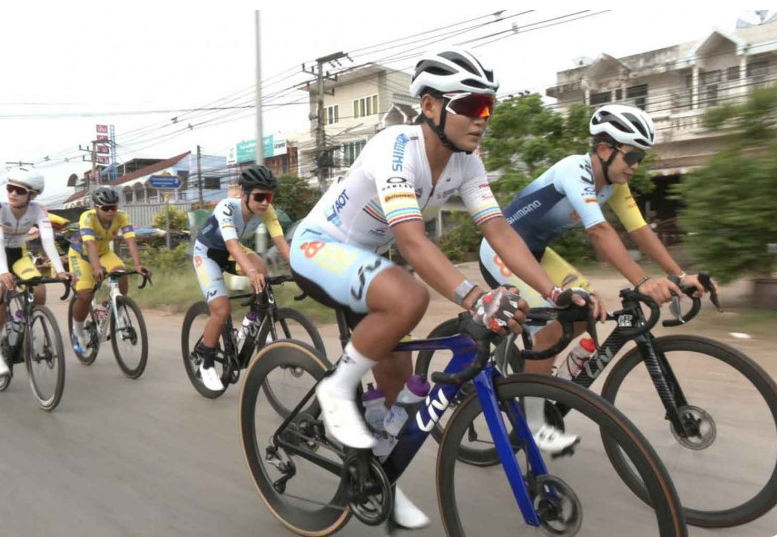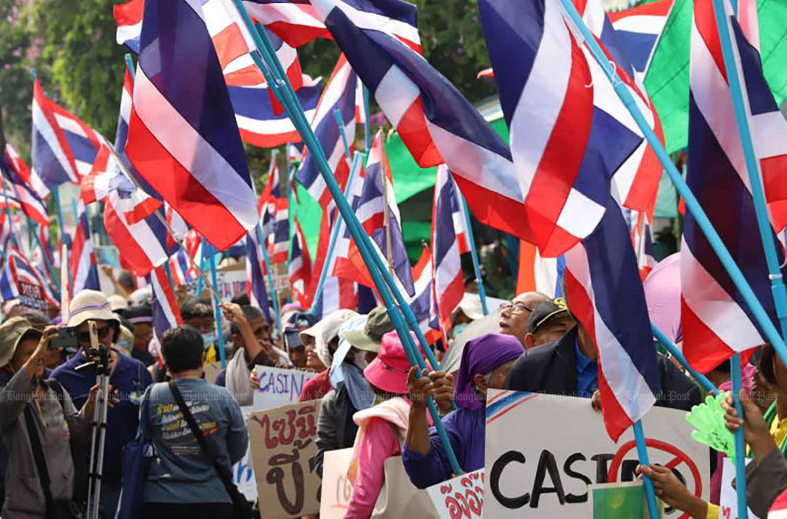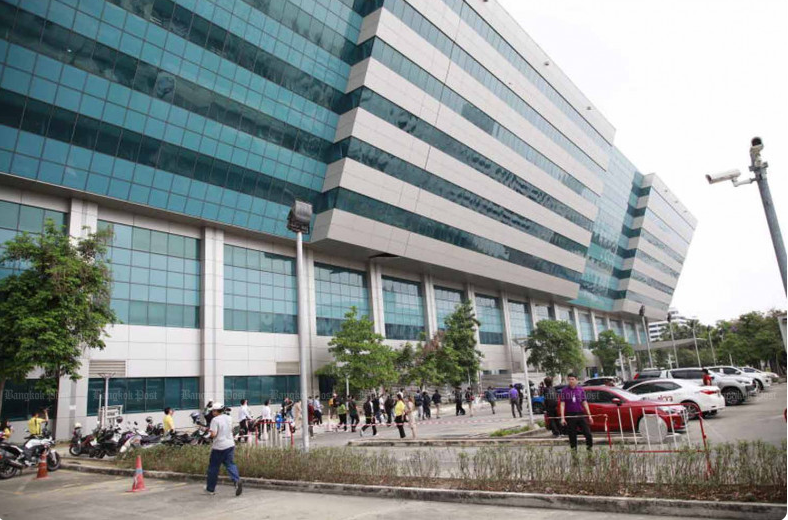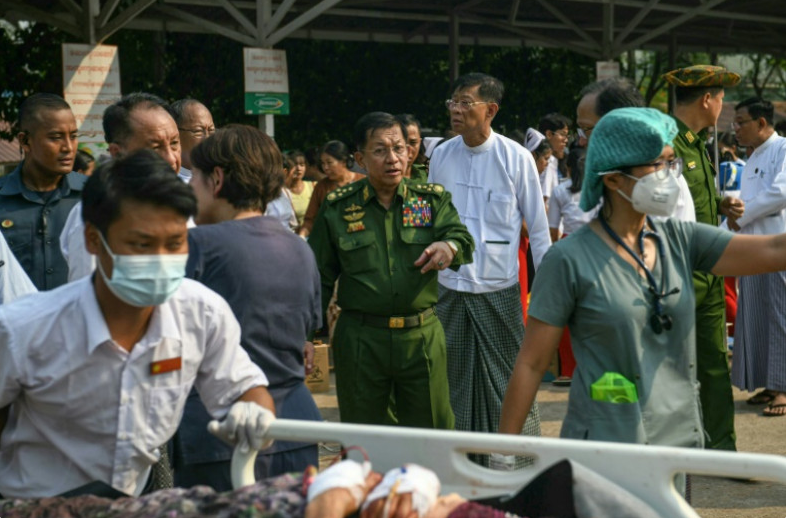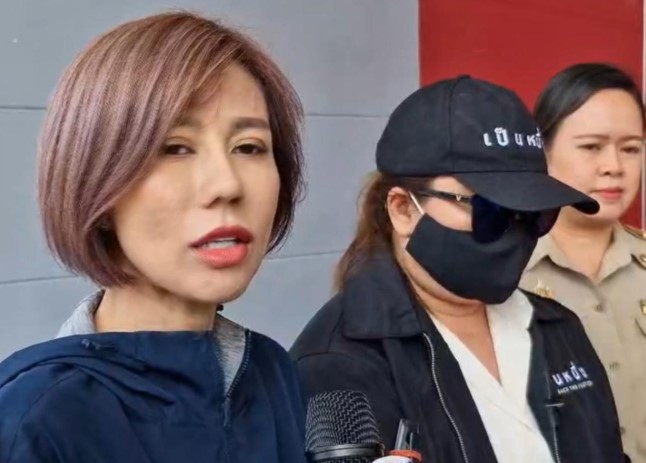Teen monster on the loose; police on lunch break; in vice’s clutches Parent duck for cover school
Saramon’s story began with a Saraburi teenager who learned that the 14-year-old boy whom she was dating wasn’t everything he appeared to be, a monster disguised as a good friend.
The boy raped the girl with five of his friends after luring her to a house in the local area on Feb 19, the girl’s mother, “B”, told reporters last week.
Activist Chalida Palamat, who goes by “Ton Ao”, accompanied the mother and victim, nicknamed “Nong A”, to visit the Nong Khae police to follow up on their investigation.
They had not yet arrested anyone — angering the girl’s mother. Worse, the boys’ schools and parents had not seemed particularly interested in taking responsibility.
On the day of the attack, Nong A had asked her grandmother if she could go out to buy snacks with friends.
The woman contacted her daughter’s friends after several hours passed without her return, but they did not know where she was.
Around 10pm, a boy returned her daughter to her home, where her father asked where she had been.
Nong A wouldn’t tell him at first, so her father struck her. Eventually, she admitted that the boy who took her, with whom she had been dating for 2-3 months, had invited her for a ride on his bike.
They’d been out before, and everything had gone all right, so she said yes.”
But this time he led her to a house where five other boys from other schools waited. They took turns sexually assaulting her, the mother said.
The boy who brought A there, she said, petitioned for sex first, then said if she refused he would refuse to take her home.
Frightened, she agreed. He then called in five of his friends who were waiting in another room and asked them to rape her too. The boys were aged 12 to 15.
“The children threatened her that if she told anyone they would kill her and her family,” Ton Ao said.
A’s mother lodged a complaint with Nong Khae police. But the case has moved slowly, she said.
Because of the indifference she encountered when she tried to contact parents and schools involved, she was fearful the case would slip through the cracks.
Ton Ao, who also brought officials from the Department of Children and Youth and the Social Development and Human Security Office in Saraburi to the police station to file a complaint, said she had spoken with one of the affected schools.
The school director said he would not get involved because the attack took place off school property. (Students also had not been attending classes for a month.)
Ton Ao, however, said the students remains enlisted at his school and the chief of the school should assist the investigation to provide information relating to the boys and contacting their parents instead of hiding himself from responsibility.
As for the parents, one said she should go to the police herself and have her son arrested.
Ton Ao said the parents need to do more to look after their child. “Parents can sometimes be held legally responsible and liable when their kid is the offender, and they did not provide any kind of supervision or control,” she added.
On that afternoon police investigators brought the two concerned parents in to question them, which took about an hour. All three of their children, identified by name as among the attackers, later led them to the home where they had attacked.
Another officer from a Saraburi child and family welfare office was also at the station. She spoke with A, who is recuperating.
If A wanted to see a psychiatrist, she would set it up. The province would also talk about compensation to the family, a human security officer from the regional office said, as well as arrangements for her continuing education.
The case continues.
Turning a blind eye
An industrial-scale kratom juice vendor in Nonthaburi peddling e-cigarettes on the side was doing so literally under the noses of local police.
Last week, provincial police from Division 1 raided a kratom and e-cigarette shop that operated openly in Soi Wat Chaloem Phra Kiat under Bang Si Muang police jurisdiction.
As one newspaper put it, villagers knew, but the police (supposedly) did not.
A police box, affixed to the fence of the house, advises that the area is under the jurisdiction of the local station.
Provincial police, who arrived to search the two-storey house as part of a government-backed clampdown on vaping, discovered a Thai caretaker and three Lao workers.
They were producing and selling the illegal substances to local teenagers, the reports said. Conveniently, the shop is located near a local school as well.
The caretaker, who spoke on condition of anonymity, identified himself as Sitthasak Jamphatip, 34. The search turned up 310 bottles of kratom stored in a refrigerator and a large ice container, 614 bottles of liquid cough syrup that is used to mix with the kratom, 54 empty cough syrup bottles, and 1,037 pieces of kratom boiling equipment.
Police also discovered 1,095 e-cigarettes and containers of e-liquid inside the house.
Beside the house, Mr Sitthasak had established a staging area for boiling and packaging kratom, complete with pots and burners, and stored a significant stock of plastic bottles for kratom packaging.
Mr. Sitthasak said he was not the owner, but that he was appointed to look after the place and sell kratom to customers. He said the e-cigarettes were stored by the owner, not sold.
He had been employed there for roughly a year, paid 600 baht a day, while the two Lao workers who boiled and packaged kratom made 300 baht a day. The third Lao worker was a cleaning lady. Police confiscated the items and referred the suspects to Bang Si Muang police for legal action.
A Surin man who liked a drink met his end in a squeezing way after he had been hanging off a wall outside his home, according to a neighbour.
The corpse of Somporn (no surname given) 56, was discovered stuck in a wall crevice behind his rented room in Sangkha district on March 2.
Somporn, who enjoyed a drink, would often climb up onto the wall and urinate, said his neighbour, Prapakorn Phunpha, 40, who was the first to find his body.
On this particular occasion he seems to have lost his balance and fallen into the narrow void between the wall and the back of his place, where he suffocated.
The crevasse is roughly about 20cm wide.
Rescue workers couldn’t extract the body and had to go behind, where bushes were sprawling. They smashed a wall to recover the body.
There were no signs of foul play, and Somporn had apparently been dead for between seven and eight hours.
Mr Prapakorn said he heard running water at about 10am, and went out to investigate. When he peered inside the victim’s room, he saw no one there. But it was latched from the inside, he said.
Suspicious, he headed upstairs and looked out the window, where he found Somporn wedged in the wall crevice.
Somporn’s body would have fallen about 1-2am he explained, and he heard thumping like somebody hit the wall. But he wasn’t paying much attention. The body was not found until 10am, too late.



